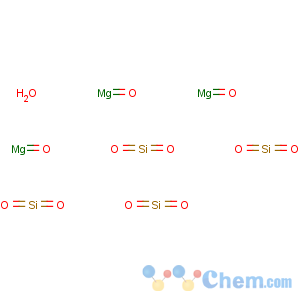Title: Talc
CAS Registry Number: 14807-96-6
Synonyms: Talcum; French chalk
Literature References: The lumps are also known as
soapstone or
steatite. Finely powdered native hydrous magnesium silicate. Comprehensive description: A. W. Newman
et al., Anal. Profiles Drug Subs. Excip. 23, 511-542 (1994).
Properties: White to grayish-white, very fine odorless, crystalline powder; unctuous, and adheres readily to the skin. Insol in water, cold acids or in alkalies. Sol in hot concentrated phosphoric acid.
CAUTION: Potential symptoms of overexposure to talc containing no asbestos and less than 1% quartz are fibriotic pneumoconiosis; irritation of eyes. Potential symptoms of overexposure to soapstone containing less than 1% quartz are pneumoconiosis; cough, dyspnea; digital clubbing; cyanosis; basal crackles, cor pulmonale.
See NIOSH Pocket Guide to Chemical Hazards (DHHS/NIOSH 97-140, 1997) p 292, 280.
Use: Dusting powder, either alone or with starch or boric acid, for medicinal and toilet prepns; excipient and filler for pills, tablets and for dusting tablet molds; clarifying liquids by filtration. As pigment in paints, varnishes, rubber; filler for paper, rubber, soap; in fireproof and cold-water paints for wood, metal and stone; lubricating molds and machinery; glove and shoe powder; electric and heat insulator.

